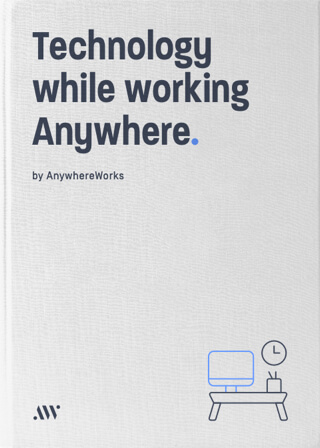You’ve probably read at least one post on the morning routines of highly successful business people. You know the ones – they wake up at 5 am to a recording of Amazonian birdsong, followed by a yoga session and a quick shower in ice-cold Evian water.
Of course, most of us can only dream of having the freedom for this kind of routine. Many of us have to deal with childcare, stressful commutes and exhausting work schedules. But you don’t need life coaches and personal trainers to develop an effective morning routine.

Whether you’re a CEO or an intern, you can develop a healthy morning routine that works for you. For people working Anywhere, there’s an added measure of freedom to explore different routines and see which works best for you. By incorporating new behaviours, you can channel your energy and manage tasks more effectively.
PLAN YOUR DAY AND PREPARE TO SUCCEED
Did you know Mark Zuckerberg wears the same thing every day because it gives him one less decision in the morning? Likewise, you can reduce the number of morning decisions by preparing the night before.
Prep can be as simple as laying out your clothing, but it can extend far beyond that. Your pre-day planning could encompass your meals, your break activities and key areas of focus for the day.

Some business leaders argue it’s not enough to prepare everything the night before. Instead, it’s better to plan out the whole week. This might be a solution for some, but it also leaves little room for movement should something new come up. Most people find it more effective to create small, actionable goals the night before.
Try to keep tasks simple and, if possible, add a rough time frame for each. Most importantly, always leave a little room for unexpected tasks. If you don’t respond well to lists, instead, try to articulate your goals in your mind before starting the day. Even a rough idea can provide a useful framework to keep you on track.
DESIGN YOUR DIET, BOOST PERFORMANCE
Brad Lande of Birchbox Man starts his day with hot water with a dash of lemon to lower blood pressure, guard against infection and cleanse the liver. Bumble founder Whitney Wolfe Herd chooses a smoothie of “organic romaine, spinach, and blueberries.” Warren Buffet, on the other hand, opts for a McDonald’s breakfast of either two sausage patties, a sausage, egg and cheese or a bacon, egg and cheese muffin.
The one thing they all have in common; they developed a morning meal that works for them. Working Anywhere gives you the flexibility to try different meals, whether browsing local cafes or cooking in your kitchen. Whatever you choose, try to ensure your breakfast maintains a balance of protein, carbs, and fats. Too much or too little of any of these can seriously hinder your performance over the day.

A 2018 study by the Massachusetts Institute of Technology, for instance, found that too many carbs can stifle productivity; hardly a surprise to anyone who’s tried to eat a stodgy lunch then stay awake in a warm office. A study by the Journal of Consumer Research revealed that glucose levels also affect your ability to make decisions and stay focused. Instead, aim for a light, low-sugar low-carb meal with plenty of protein.
It’s not just what you eat that defines your productivity. Water is essential to brain functioning. After 6-8 hours without it, it’s vital you hydrate yourself as soon as you wake up. If you prefer to drink tea or coffee with breakfast, try to limit yourself to one or two cups. Too much of either can equal too much caffeine, making it difficult to focus on work.
REMOVE DISTRACTIONS TO IMPROVE FOCUS
Staying focused throughout the day is one of the biggest challenges of working, whether at home or in the office. There’s always a temptation to put off starting the day. By accounting for this in advance, you can incorporate techniques into your morning routine to help overcome it.
Josh Davis, director of research at the NeuroLeadership Institute, explained in a recent interview with Fast Company: “Unfinished work reminds you that you have unattended tasks, which can stress you out and make it hard for you to do focused work. Before you turn on your computer, take five to 10 minutes to move any clutter that might distract you to where it’s not visible.”

In short, distraction breeds procrastination. However, according to Neil Postman’s book Amusing Ourselves to Death, the average adult can only maintain between real focus for between five to 20 minutes. After that, the focus circuits in your brain disengage, making you more impulsive and less receptive to learning.
To that end, it’s important to reward periods of concentration with moments of rest. If you’re struggling to focus, the Pomodoro Technique could offer a solution. The technique enables you to break large tasks into smaller chunks.
When you begin a task, set a timer for 25 minutes, work flat out, take a break, then repeat. Not only does it make tasks more manageable, it’s also a great way to tap into a work-flow mindset without the pressure of producing perfection first-time around.

The easiest way to improve your team’s ability to collaborate when you’re working Anywhere is by using the right tools.



